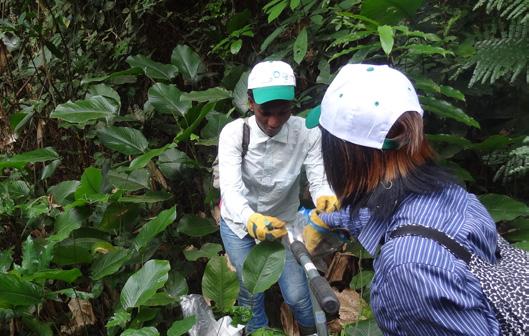
10 minute read
and achievements of IFS grantees
by IFS
A selection of research results and achievements of IFS grantees
IFS grantees are contributing significantly to changes around the world, through their commitment to scientific advancements, their enthusiasm to learn and to work with others, and their attainment in getting their research results put into use at local, national, regional and global levels. In 2021, we followed up on the results and achievements of the 92 grantees who were awarded grants in 2017. (For a detailed list of all the approved projects, refer to the list in the IFS Annual Report 2017.)
As gleaned from grantee responses to the questions on the PCFs, numerous impacts are evident from IFS’s support of early career scientists, in immediate, near-term and long-lasting ways, in villages, forests, fields, policy discussions, government practices and the global scientific community. Indeed, most respondents considered that their projects contributed to several of the UN’s Sustainable Development Goals (SDGs), with 14 out of the 17 SDGs mentioned. There was a strong emphasis on the SDGs on reduction of poverty and hunger reduction, improved health and well-being, responsible consumption and production, climate action, and issues related to life below water and on land. The 2017 grantees have thus far also published 77 articles in peer-reviewed scientific journals, thus reaching broader scientific communities.
Difficult though it is to choose which of the 92 projects from 2017 to highlight, presented here are ten that are representative of topics, countries, regions, women and men. These selections also represent the many early career scientists who IFS is honoured to include among those who work to support its mission. In addition to responding to the first PCF question about how their own high-quality research is being used in their home countries, grantees were also asked to indicate the wider impact of their projects, i.e., the multiplier effect of being awarded an IFS grant.
All PCF respondents mentioned that other people at their institutions benefitted from their grant, including scientists, technicians and research students. Additional institutional benefits from the IFS grant were improved quality of teaching and increased training and capacity-enhancing opportunities for students at all levels (post-doc, PhD, MSc and BSc students), and also training for technicians within and outside their home institutions. Purchased equipment widely used by other scientists and students was also often mentioned as an additional benefit of the grant. Many of the respondents also indicated that their home institutions had gained increased visibility and recognition through increased research output, new skills development and increased expertise. This generated collaboration opportunities with other institutions – both nationally and abroad – as well as more and better opportunities to compete for other grants.
As said by Dr Olaniran Hamed Odountan of Benin:“The fact that I got the IFS grant at 26 years old surprised my colleagues and motivated the other PhD students and colleagues working on aquatic ecosystem ecology and conservation to develop research projects and apply for grants.”
Dr Symphorien Agbahoungba, also from Benin, reports: “Our Applied Ecology Laboratory has organised the West African Cowpea Consortium through my cowpea breeding programme and has increased the visibility of the University of AbomeyCalavi in West Africa. In addition, many articles have been published in high impact factor journals and others are under preparation. An active collaboration has been created between our group and the West African Centre for Crop Improvement of the University of Ghana, where germplasms are shared and respective students’ mobility is established for training and supervision.”
Most of the responding grantees noted that they had increased their scientific contacts through the IFS grant, with IFS advisors and other grantees, as well as other scientists. Most of them also listed one or several scientific networks they are involved in, at individual, institutional, national, regional and international levels. All but one respondent are still active in research, with one person employed by a national research centre, and most of the others affiliated with one or more universities as faculty members, lecturers, researchers or research assistants, or post-doc research fellows, and thus engaged fulltime in teaching and research activities. Three people have left academia but remain in research, two for a private company, and another as manager of a global water supply network. Several are heads of departments, sections or research laboratories.
Thirty-two respondents reported that they have obtained higher academic degrees, or were promoted, had received awards or fellowships, or travel grants. Thirty-five grantees mentioned other sources of research funding obtained, either for themselves or their institutions. These (sometimes multiple) national, bilateral and international grants were for research, capacity enhancement or travel.
In terms of the significance that the IFS support had for their careers, ten respondents explicitly stated that the IFS funding was instrumental for them to finalise their PhD degrees. All highlighted different ways in which their careers had been strengthened, such as increased research skills, opportunities for research collaboration (both nationally and interna-
tionally), and the possibilities to publish their research results. Others mentioned their improved skills in grant writing and management, teaching and leadership. Also mentioned were that they were more respected by having obtained a prestigious international competitive grant, and for some, their promotion was a direct result of the IFS grant. Also significant were the opportunity to have MSc students participating in field work and being able to obtain scientific equipment for their institutions.
Dr Nhung Thi Nguyen of Vietnam describes the significance of an IFS grant to her: “The IFS support was a chance to continue my PhD research in a field that had not been supported by my institution due to different interests. I could implement new techniques in molecular biology that I had not used before, and I could supervise students who were interested in molecular biology and needed internships for their graduating theses. In Vietnam, women scientists often start their careers later than men do, and then have difficulty in finding research funds, also finding it harder than men to focus on doing research because of social roles and prejudice. IFS supports woman like me in my research and career, which has encouraged other women scientists in my institute to be confident and develop themselves as research scientists.”
A soil sampling session in a quadrant at Banco National Park, Dr Akaffou Sopie Elvire Vanessa (left) and Dr Gouli Gnanazan Zinsi Roseline. Dr Marcel Houngbédji biobanking for long-term conservation of microbial culture being used for freeze-dried or oven-dried starter culture development.
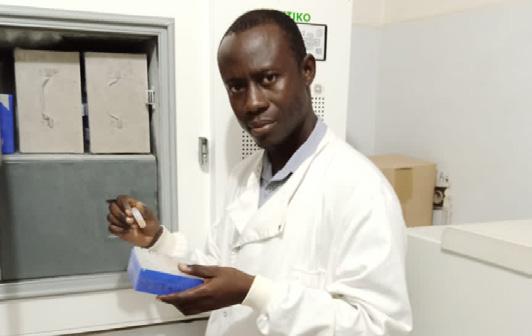
DR ROSELINE ZINSI GNANAZAN GOULI University Félix Houphouët-Boigny, Ivory Coast
A multivariate approach to identify plant species indicative of invaded ecosystems: Case of Chromolaena odorata (L.) R.M. King & Robinson (Asteraceae) in Côte d’Ivoire
The main objective of the project was to contribute to a better understanding of the biotopes invaded by Chromolaena odorata. More specifically, we studied the characteristics of the biotopes invaded by this exotic, the plant groups of the environments invaded and not invaded by C. odorata, and the indicator species of each plant group. The results are currently being used by the Parks Management Office to examine invasion by several invasive alien species and in particular Chromolaena odorata.
DR MARCEL HOUNGBEDJI University of Abomey-Calavi, Benin
Safety assessment of lactic acid bacteria and yeasts and development of multifunctional starter culture for the production of nutritious and safe cereal-based fermented foods
The developed starter culture was tested at Small and Medium Enterprises (SME) in specific conditions (e.g., temperature, dose and fermentation duration). The successful valorisation of the results through the use of the starter at SMEs needs further investigation to allow the efficient use of the starter at SME level for large scale production.
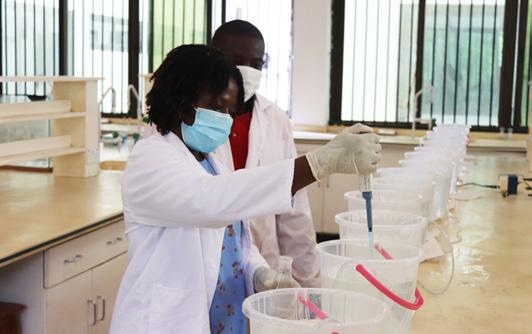
Dr Edem Mahu dosing test organisms with mercury (Hg) with her student looking on.
DR EDEM MAHU University of Ghana, Ghana
Human health risk assessment and evaluation of biological impacts of trace metal pollution in major Ghanaian estuaries and nearshore environments
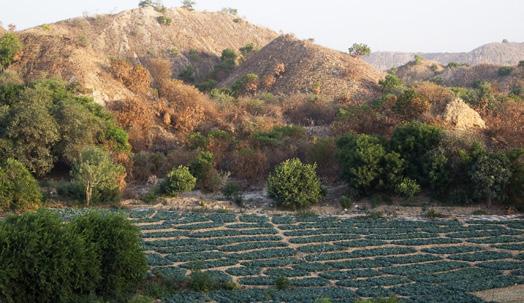
We now have important information regarding safety as far as seafood consumption in Ghana is concerned. I have been hosted on a radio programme in the country where I had the opportunity to discuss the relevant findings of the research with the people of Ghana. On this show, I discussed the impact of heavy metal pollution on seafood safety and security in Ghana based on data collected through the research.
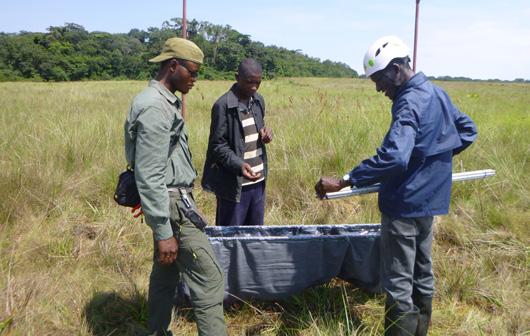
Hands-on-training with Claude Mande, Raymond Lokeka and Euphrem Mpaka, in the assembly of harp traps with conservation officers in the buffer zone of Lomami National Park, Democratic Republic of the Congo, for Mr Claude Mande’s research.
MR CLAUDE NDJABU MANDE Biodiversity Monitoring Center, Democratic Republic of the Congo
Afrotropical bats’ functional variability as a disturbance impact indicator
The previous practice of bat trapping resulted in almost 100% mortality. In view of new agreements on biodiversity, and the restriction of certain specialized scientific journals to publish studies that have not sacrificed animals, we have entered an updated context of acquiring biological samples according to non-invasive and ethical approaches. Through the established wildlife and habitat monitoring system, we combine mist netting, harp trapping and acoustic surveying to optimise bat monitoring. We take biological samples by wing punching and swabs. To apply this new approach, three students from the University of Kisangani were trained in these methods; they now participate in field missions to share experiences in the application of these methods.
Design of innovative market gardening system in Senegal.
DR MAME FARMA NDIAYE Senegalese Institute of Agricultural Research, Senegal
Design of innovative market gardening systems for improved nematode and nutrient management
The results of the biogas compost trials have helped promote their use in crops. Indeed, these tests showed that the addition of biogas compost gave a production comparable to that obtained in conventional crops (with chemicals).
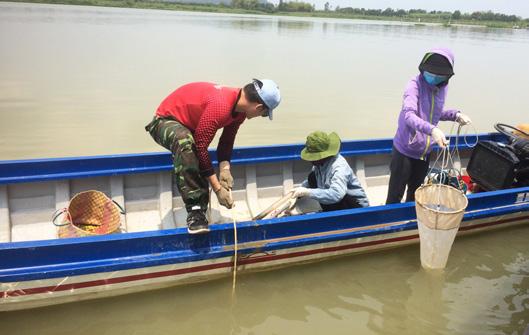
Thanh Thai Tran, Huynh Nhi Dinh and Thi Hoang Yen Tran collecting phytoplankton samples in Tri An reservoir, Vietnam, for Dr Thanh Luu Pham’s research.
DR THANH-LUU PHAM Institute of Tropical Biology, Vietnam Academy of Science and Technology, Vietnam
Does artificial dam stimulate toxic cyanobacterial blooms? A case study in the Tri An dam and reservoir, Vietnam
This study has addressed water eutrophication and enhanced the early warning toxic effects in a drinking water supply reservoir. It also enabled regional authorities to identify multi-
hazards on the regionally specific biota as well as strengthen management capacity at technical and institutional levels. The study results have increased the exchange of information among institutions and nations, and enhanced scientific knowledge communication through publications. Our institution will provide public authorities and policy makers with valuable information leading to the establishment of regulations for cyanotoxins management.

Dr Vonimihaingo Ramaroson Rakotsamimanana working in preparation room.
DR VONIMIHAINGO RAMAROSON RAKOTOSAMIMANANA National Center for Applied Research in Rural Development, Madagascar
Incorporation of moringa and stevia leaf powders into root/tuber flour biscuits for protein fortification and sucrose substitution
One formulation was selected from among the formulations tested and analysed during this project. Prototype cookies were made and presented via the MIKASA platform during national events. These aim to promote good nutrition in regions most affected by malnutrition in Madagascar. In August 2021, two Open Door Days on Nutrition were organized in Fianarantsoa (one of the regions with a high rate of chronic malnutrition). This presentation of research products aimed to sensitize organizations working in the fight against malnutrition in Madagascar in the large-scale distribution of cookies. These organizations come from various sectors: UN organizations such as WFP, FAO and private sector manufacturers of cookies.
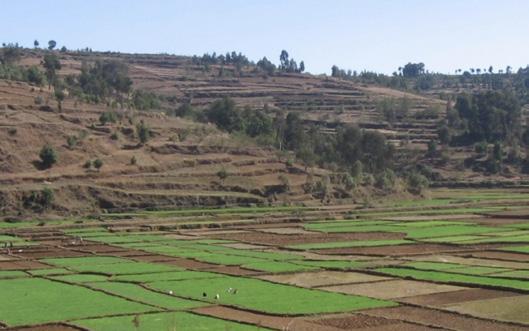
The landscape of Vakinankaratra, Madagascar.
DR HANITRINIAINA MAMY RAZAFIMAHATRATRA National Center for Applied Research on Rural Development, Madagascar
Agroecology, a lever for poverty reduction
The farm model developed could be used as a decision support tool for policy-makers and development professionals when it comes to promoting agroecological innovations, particularly conservation agriculture at farm level in the western part of Vakinankaratra. The model could also be improved and calibrated to test different agroecological innovations and/or be used in other areas of Madagascar to tackle poverty in rural areas.
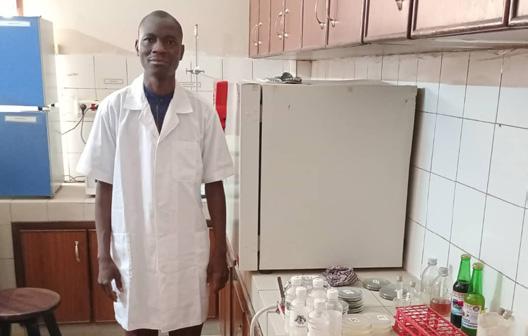
Dr François Tapsoba , Assistant Professor.
DR FRANÇOIS TAPSOBA Joseph Ki-Zerbo University, Burkina Faso
Improvement of the production process, sanitary and sensory quality of Borassus akeassii wines
The results are being used to improve the production process, and the sanitary and sensory quality of Borassus akeassii (palm) wines, thus contributing to the diversification of the cold drinks available to consumers.








